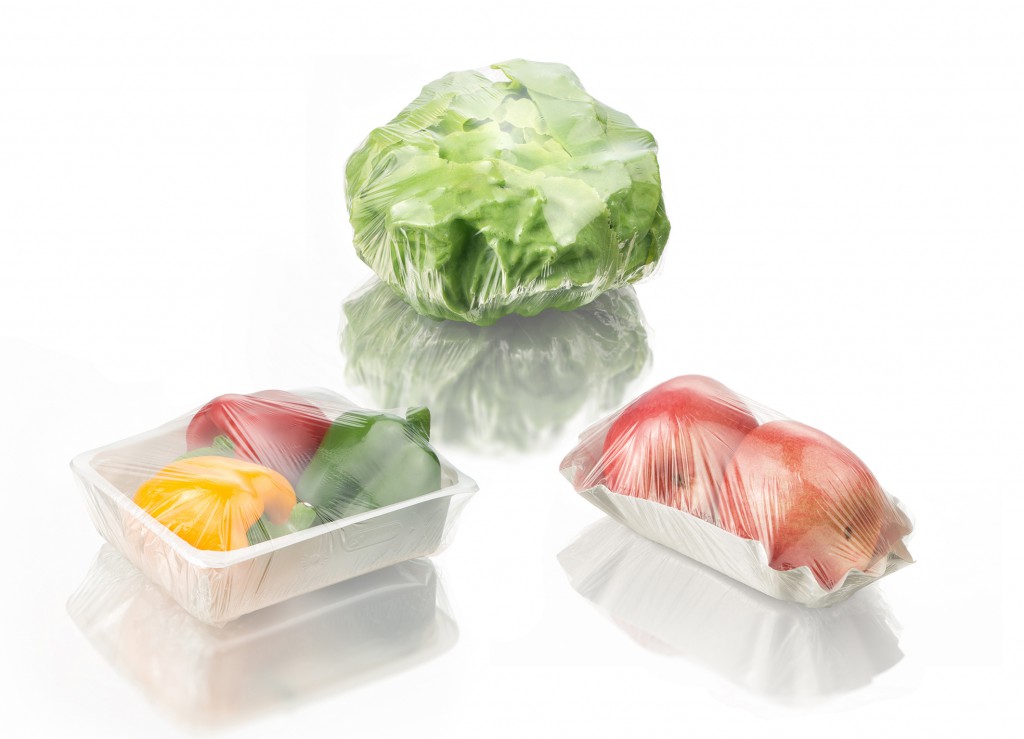
- Ideal combination of breathability, mechanical performance and aesthetics
- Certified compostable according to standards for industrial composting and home composting
BASF and Fabbri Group have developed a sustainable solution for cling film used in fresh-food packaging: Based on BASF’s certified compostable ecovio®, Fabbri Group produces the highly transparent stretch film Nature Fresh. Meat, seafood as well as fruit and vegetables can be wrapped manually or with automatic packaging equipment. Industrial stretch packaging is also possible. It is the first certified compostable cling film that combines optimal breathability for an extended shelf life of fresh food with high transparency and excellent mechanical properties for automatic packaging. Nature Fresh is food-contact approved according to US and European standards.
With this property profile, the film helps to keep food fresh for a longer period of time when compared to polyvinyl chloride (PVC) alternatives used for cling film such as polyethylene (PE). As a consequence, the greenhouse gas emissions originating from food that is produced and distributed – but ultimately wasted – can be reduced. After usage Nature Fresh can be composted together with any food waste in home compost or industrial compost according to national legislation. It thus enables organic recycling and helps closing the nutrient loop towards a Circular Economy.
Cling or stretch film is a flexible thin film that is predominately used for packaging and applied in a stretch-wrap process. Wrapping can be done manually or by machines. The Nature Fresh film made of ecovio® is the certified compostable alternative to cling films made of PVC and PE so far used in fresh food packaging: Its overall performance – mechanical properties like tensile strength and elongation at break, breathability, film transparency and aesthetics like elastic recovery and anti-fogging – is comparable to films made of PVC. At the same time ecovio® shows a better water vapor transmission than PE, which is essential for optimal fresh food packaging.
Carsten Sinkel from Global Business Development Biopolymers at BASF says: “We observe a changing market environment: The market is looking for alternatives to PVC that is today’s performance standard for most cling film packaging of fresh produce. PE films are lacking in performance, often leading to a reduced shelf life of packed fresh food. This results in considerable greenhouse gas emissions from food waste: fruits and vegetables, for example, are responsible for 33% greenhouse gas emissions from all food waste globally. Our certified compostable ecovio® enables the production of a cling film that prolongs shelf life of fresh food and at the same time can be composted after use together with organic waste according to national legislation.” The EU Waste Framework Directive promotes solutions to reduce food waste and increase organic waste collection.
In order to find the perfect match of a sustainable material with excellent packaging properties and easy wrapping, BASF and Fabbri Group joined to develop a cling film which can also be efficiently used on stretch wrapping machines. Stefano Mele, CEO at Fabbri Group: “The Fabbri new way to sustainability is combining our Nature Fresh solution with our new Automac NF wrappers so that the food packaging industry can benefit twice: from an innovative cling film and easy film processing. In this way our certified compostable cling film can be used together with trays and labels of the same kind in order to have a complete compostable packaging.” Fabbri Group offers Nature Fresh in four different formats: as rolls for manual or automatic packaging machines in industrial food packaging, for cutter boxes in hotels, restaurants and catering services, as jumbo rolls for converters as well as rolls for end consumer hand-wrapping applications.
Source
BASF, press release, 2020-02-05.
Supplier
BASF Corporation (US)
Fabbri Group
Share
Renewable Carbon News – Daily Newsletter
Subscribe to our daily email newsletter – the world's leading newsletter on renewable materials and chemicals













